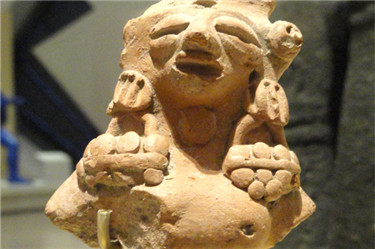
1、Harappan Civilization
哈拉帕文明
Also known as the Indus Valley Civilization, the Harappans were a group of people who lived in parts of present-day Pakistan and India. Gifted with the idea that planning cities in advance would be a good idea, their urban areas were second to none; unfortunately, due to what scientists believe to have been a massive, centuries-long drought, their culture slowly declined, never to rise again. This is currently nothing more than a theory, but it helps explain other cultural declines in the area as well.
也被稱為印度河流域文明,哈拉帕人生活在今巴基斯坦和印度的部分地區。他們極有天賦的認為,良好的城市規劃將是非常有益的,于是他們擁有不輸任何文明的城市區域;很不幸的,基于科學家們所認為的,在經歷了嚴重的、數個世紀之久的干旱之后,這個文化逐漸的沒落了,并且再也沒有復興起來。這雖然不過是一個理論,但也的確有助于解釋這一地區其他文明的衰落.
Beginning sometime in the 25th century B.C., the Harappans also developed their own language, a script with nearly 500 different characters which has not been completely deciphered even today. Their most noteworthy artifacts are seals, usually made of soapstone, which depict various animals and mythical creatures. Harappa and Mohenjo-Daro are the two largest Harappan sites, with the former labeled as a UNESCO Heritage Site. When it collapsed, the ruins of the Harappan civilization provided a template for the various other cultures which sprang up after it
哈拉帕文明始于公元前25世紀的某個時期,他們也發展出了自己的語言,一種有著近500個不同字符的文本,直到今天也未能完全破譯。他們最著名的工藝品是密封印章,一般以皂石制成,其上繪有各種動物及神秘生物。哈拉帕及摩亨朱—達羅(Mohenjo-Daro)是哈拉帕人最大的兩個據點,前者還是聯合國教科文組織所認定的世界文化遺產。崩潰以后,哈拉帕文明的遺跡為其后涌現的諸多文明提供了樣板。
n. 范圍,行列,射程,山脈,一系列
v. 排











